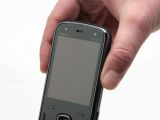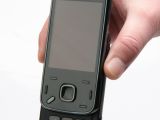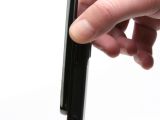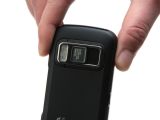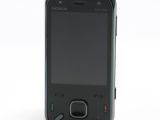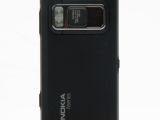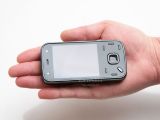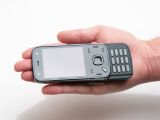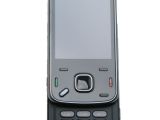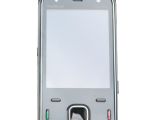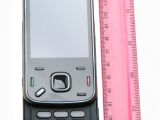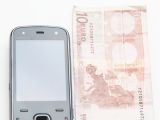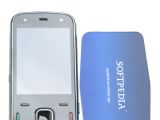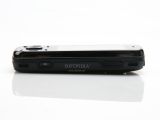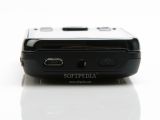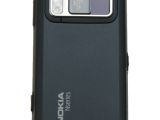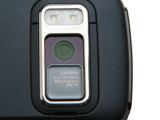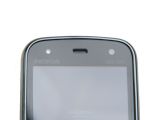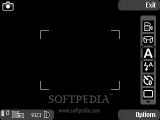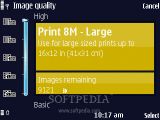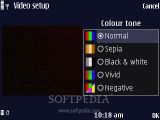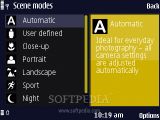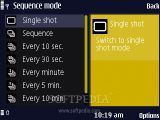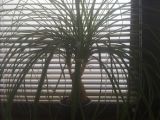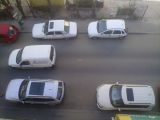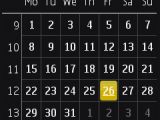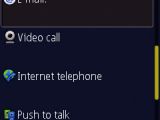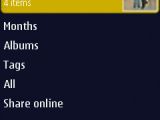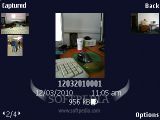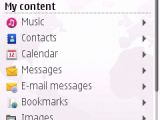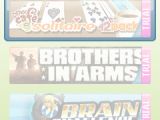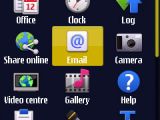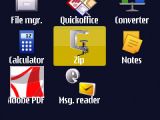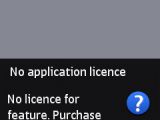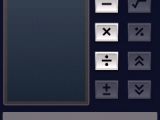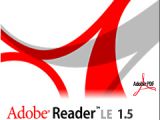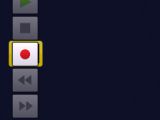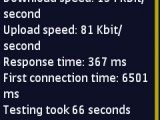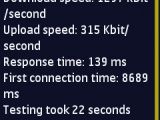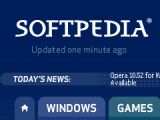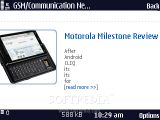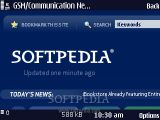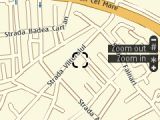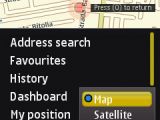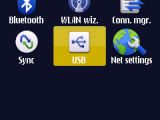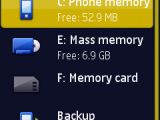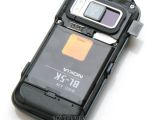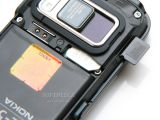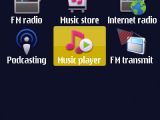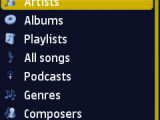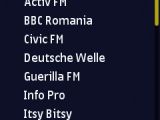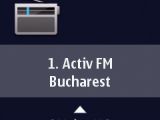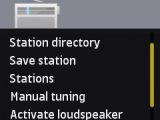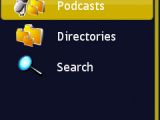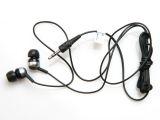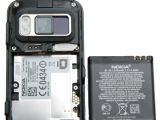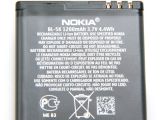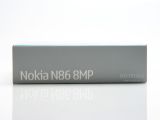The first Nokia mobile phone to reach the 8-megapixel camera mark, Nokia N86 8MP revives the N-series, which was almost overrun by the competition. Following the same line imposed by its N85 predecessor, Nokia N86 8MP is stuffed with the latest camera technologies that the Finnish company seemed to be capable of sharing with its users.
Carrying a Carl Zeiss lens, autofocus, dual LED flash and many other advanced features, the Nokia N86 camera overcomes the 8-megapixel threshold, even though it's a little bit late. Combining the excellent traits of a pocket camera with the qualities of a very good music phone, don't expect that this smartphone will come too cheap. Even though it doesn't impresses through its shape and design, the device has all the ingredients of a high-end smartphone, which is the main reason it has been tagged as an N-series phone.
Announced in February 2009, Nokia N86 8MP was launched on the market in June 2009 and can be bought for about USD450, depending on your location. There are two colors available for you to choose from: Indigo Black and White.
DesignAs I already stated above, Nokia N86 8MP doesn't stand out from the crowd, as it bears the same standard Nokia slider look. While this is not necessarily boring, the smartphone simply lacks any "wow" factor that might make it more appealing. Nokia N86 8MP features a dual-slider form factor, as it can be slided in both ways, just like the older N95. The smartphone looks and feels pretty bulky, as it measures 103.4 x 51.4 x 16.5 mm and weighs 149g (including battery). It includes a medium-sized, 2.6-inch display, as well as a secondary video-call camera and an ambient light sensor, which have been placed just above the screen.
The standard Symbian smartphone set of keys can be noticed below the display: two contextual keys, the Accept (green) and Reject (red) call keys arranged symmetrically to the left and right, the C (Delete key), the Meniu key and the usual D-pad cursor. The left side of the smartphone features a lock/unlock sliding key, which is very useful for slider devices. The right side of the phone features a dual volume key, as well as a dedicated camera button. On top of the phone, you will notice the standard power on/off button, a 3.5mm jack port and the standard microUSB port. The back of the phone will reveal the "piece de resistance," which is the 8-megapixel camera featuring dual LED flash, autofocus, the Carl Zeiss lens and camera-lens cover for protection. Around the camera, there's also a plastic grip that can be pulled out and used as a support for the phone in landscape mode, if you want to keep it on the table when watching a movie. The keypad layout is pretty relaxed with long keys with enough space in between. The only minor drawback could be the fact that they're a little bit too rigid and you will need to press them harder. The phone has two parts, which are totally different. While the front part is made from a metallic compound, the back cover is purely made from a cheap, thin plastic, which will give you the creeps when you’ll try to pull it out. As the device is a dual slider, you will also be able to slide it up, which will reveal four keys with multiple uses: gallery, music and games. The sliding mechanism is flawless and works smoothly. Overall, the phone looks compact and solid, with the exception of the back cover that looks flimsy. Nothing that will really amaze possible buyers regarding its design, just a simple, standard slider smartphone. Display and CameraNokia N86 8MP includes a 2.6-inch AMOLED display that supports 16 Million colors and a 240 x 320-pixel resolution. The screen features a scratch-resistant surface, which protects it when the device is kept in a pocket together with other metallic objects. The phone also includes an accelerometer sensor for auto-rotate, which is very sensible. Still, I found the feature pretty annoying, as there were times when the image would simply not turn back easily to portrait mode, after you kept it in landscape mode. I also noticed the sunlight eligibility to be poor, which means you will have troubles distinguishing anything on the screen when it's exposed to strong light. Otherwise, I was content with the size of the screen, even though today's smartphones tend to include at least 3.0-inch displays.
The main attraction of the phone – the 8-megapixel camera – has lots of extra-features, such as: autofocus, dual LED flash, a wide, 28mm Carl Zeiss lens, variable aperture, geo-tagging, ISO 800 and can also record clips in VGA mode at 30fps. Nokia N86 8MP seems to be the first mobile phone to feature a 28mm-wide lens, which translates into a larger angle of view. You will be able to get more of the subject you wish to picture, without needing to zoom out or go further back. Still, this has some disadvantages, as the lens has troubles when you want to shoot subjects that are very close, which will show rather altered compared with the original ones. Another strong point of the camera module is the variable aperture, which should mean sharper and more in-depth pictures, depending on the light that the lens receives. Unfortunately, you won't have the chance to manually set the aperture value, as everything is done automatically. The last, but not least, innovation that has been included by Nokia in its module camera aggregate is the mechanical shutter. The user interface of the camera looks much like that of its N85 predecessor, being easy to navigate and with plenty of complex settings. Starting with the ISO setting that can go up to 800, users will be able to take advantage of features such as: White Balance, Colors, Effects, Exposure compensation, Scene, and Geo-tagging. The whole toolbar of the interface can be customized as they see fit. The maximum resolution that you can use to take pictures is of 3264x2448 pixels. The quality of the pictures is above average, but far from what other 8-megapixel camera phones have to offer. I guess it's the processing software that is not doing a good job. The pictures taken are lacking details and, even if it seems that the software tries to eradicate the noise, this is done at the expense of oversharpening the picture. In terms of recording, Nokia N86 8MP is doing a much better job, even though the VGA resolution at 30fps is a little bit overrated. While Nokia N86 8MP is clearly the best camera phone manufactured by the Finnish company, it seems that Nokia needs to shape up the camera software because Sony Ericsson and Samsung seem to have the upper hand here. Let's hope and pray for a future update that should tune up the picture's quality. Menu and SoftwareNokia N86 8MP runs the Symbian 9.3 operating system, with an S60 3rd Edition and Feature Pack 2 interface. Feature Pack 2 brings both visual and performance improvements, which otherwise wouldn't be available for devices that only run Feature Pack 1, unless they're updated. This does not mean that you can get all the features of the FP2 on FP1 devices, as there are still exclusive ones that you can only take advantage of on an FP2 handset. Besides the Gallery with the geotagging feature, you'll get a new kind of Active standby layout. The latter enables users to bring up on the Home screen a lot more shortcuts than usual, such as games, applications and link shortcuts. The new Task manager is also a specific FP2 improvement, and gives quick access to any applications running in the background. The Task manager now appears on top of every menu option that the user opens. Moreover, some cosmetic changes have been included, such as better menu transition effects and stylish icons.
The main menu can be accessed by pressing the left Symbian key, right under the Accept calls key. In addition to the usual options and applications that we find in almost all Symbian-powered handsets, Nokia N86 8MP features Search and Maps utilities. Maps is used together with the GPS receiver and enables owners to employ Nokia maps (Ovi maps), localization and directions when they're on the go. Lots of maps can be downloaded from Nokia's website and then used to pick the shortest route from one point to another. Under the Office category, we find QuickOffice applications, used for reading Word, Excel and PowerPoint files. Users won't be able to edit any files without upgrading the application, which, of course, costs money. There's also a PDF reader, a Notepad, a Zip archivator, and a currency converter. You can now find the Calculator under the Office submenu, while the voice recorder has been moved to the Applications submenu. The phone features a wide range of 3D games (trial versions) when the N-Gage menu is accessed.The most thrilling feature of the device is the Motion sensor that grants it the Automatic rotation ability. This means that, every time you want to use your phone's screen in landscape mode, you'll only need to move its upper-left side downwards, and the interface will automatically reshape in landscape mode. I had some troubles with the motion sensor, as it sometimes 'forgot' to turn back to portrait.
The phone includes everything a user may need on the road or in the office, pre-installed on the handset: email, web, calendar, organizer, IM, office tools, messaging, applications manager, connectivity wizard, synchronization tools, GPS navigator, themes, profiles, and even more. CommunicationNokia N86 8MP is a quad band GSM (850 / 900 / 1800 / 1900) handset, HSDPA (3.6 Mbps) compatible, which features GPRS class 32 (107 kbps), EDGE 32 class (296 kbps), High-Speed Circuit-Switched Data (57.6 kbps) and Wi-Fi 802.11 b/g. Tested on the EDGE and 3G networks, the phone has performed pretty good, as you can see from the screenshots.
The WLAN wizard helps you search and define your WLAN network connection settings. Should you want to connect to the Internet, you must first define an Access point (EDGE, WLAN or 3G). You can do that by going to the Main menu / Tools / Settings / Connection / Access points, and define which access point to be used whenever a network connection is required (Main menu / Home network / Settings). The integrated browser includes Flash Lite 3.1 and Java support. Other connectivity tools include Bluetooth 2.0 with A2DP support, and microUSB for PC synchronization (charging included). When connecting the USB cable, you'll be able to choose from four modes: PC Suite, Mass storage, Image transfer and Media transfer. All of them are intuitive and easy to use, so there's nothing more to add here. The built-in GPS receiver works perfectly and features A-GPS support, as well as digital compass. In terms of messaging, the phone accepts all available message types, but, given the not-so-friendly keypad, it will be hard to enjoy texting. Anyway, the handset includes no less than four message editors, one for each type: SMS, MMS, audio message and e-mail. The message client works with POP3, SMTP, and IMAP4 protocols, and supports more than one email account. Also, it can download headers and allows for attachments.<The quad-band (GSM 850 / GSM 900 / GSM 1800 / GSM 1900) network-compatible slider has a very good GSM signal reception. The UMTS signal reception is likewise excellent. The sound is outstanding at both ends, and loud enough. The vibration alert is a little bit low in intensity.
Processor and Memory
Nokia N86 8MP is powered by a single ARM11 family processor running at speeds of up to 434 Mhz. It's the same CPU used onto the N97 smartphone, which should say something about it. I have noticed some lags and hiccups during the playing of games. While N86 8MP is not a snappy device, you'll get used to it, as it's something pretty much standard for most Symbian devices.
The handset embeds a 78MB user-free internal memory, 8GB of storage space and 128MB of SDRAM memory. The storage space can be expanded up to another 16GB through the hot-swappable microSD card slot. MultimediaNokia N86 8MP is a multimedia device, thus the 3.5mm jack port doesn't come as a surprise. The jack port enables users to attach any compatible headphone, which will improve their experience. The integrated music player is the same, old one that we also found in N97 and N85, and supports almost any type of music file you can think of: MP3, AAC, eAAC, eAAC+, WMA, M4A, as well as playlists. Files are automatically sorted by artist, genre, and albums, or by using the PC Suite.
The music player can be easily controlled with the D-pad, but you can also take advantage of the four music keys, which are revealed when the phone is slid down. The included HS-83 Stereo earphones are making for a good addition to the sales package. There's also the option to use the Bluetooth 2.0 with A2DP support, which will enable you to listen to music wirelessly. The music player features all kinds of options and settings: Equalizer, Visualisation, Balance, Loudness, Stereo Widening, or Shuffle. Some of these are also available for the included FM Radio, which can memorize up to 50 base stations and features RDS and Visual radio capabilities. Nokia N86 8MP also boasts an FM transmitter feature that can be used to go live on the air. The reception is excellent, and the quality of the sound likewise. Nokia N86 8MP delivers one of the best music quality sounds, being on par with the N97, I would say. Furthermore, videos can be played with the help of the integrated Real Player application. The video player is fully compatible with both orientations, namely landscape and portrait, and can run movies in full screen. BatteryThe 1,200 mAh Li-Ion (BL-5K) battery has an officially stated life expectancy of 312 hours in standby mode (264 hours for 3G) and of about six hours and 18 minutes in talk-time mode (three hours and 54 minutes for 3G). What we got was four days of use: approx. three hours of calls and 5MB of overall data transfer. I would say that the battery is pretty decent and that 25 hours of music playback is also a nice addition.
ImpressionsEven though I haven't been too impressed by its design, Nokia N86 8MP represents an excellent choice over most of Nokia's N-series smartphones. The slider performs above average in all areas and, for the right price, you could experience an all-round device that can meet almost all expectations.
The Good
The Bad
Sales Package
Nokia N86 8MP handset; Nokia Battery (BL-5K) 1200 mAh; Nokia Travel Charger (AC-10); Nokia Video Connectivity Cable (CA-75U); Nokia Connectivity Cable (CA-101); Nokia Wired Headset (AD-54+HS-83); User Guide; Ovi Suite DVD 1.1.
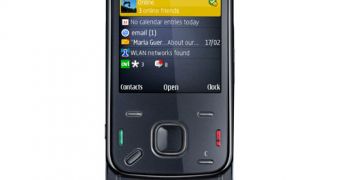
 14 DAY TRIAL //
14 DAY TRIAL // 
